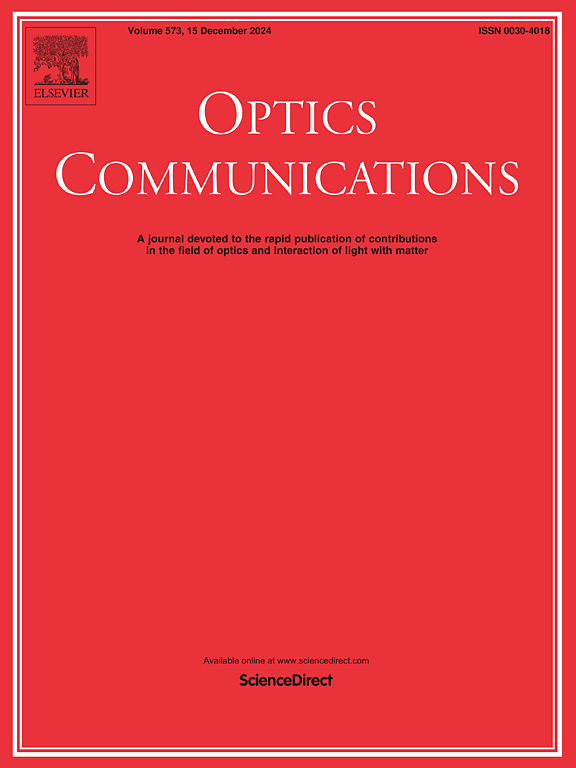Experimental verification of multi-dimensional geometric shaping in OFDM-VLC system
IF 2.2
3区 物理与天体物理
Q2 OPTICS
引用次数: 0
Abstract
In this paper, an innovative four-dimensional set-partitioning geometric shaping (4D-SP-GS) modulation format is proposed and experimentally verified in orthogonal frequency division multiplexing based visible light communication (OFDM-VLC). The method optimizes the position of the constellation points by using the quasi-polarization multiplexing. The perfect combination of SP and polarization ring switching (PRS) achieves flexible grouping and ring switching between constellation points, and further expand the minimum Euclidean distance (MED) of constellation points. Orthant symmetry (OS) reduces the complexity of constellation point mapping in 4D space. The entropy of the 4D-SP-GS can reach 8 bit/symbol. The simple real-valued precoding decreases the peak-to-average power ratio (PAPR) of OFDM and equalizes signal-to-noise ratio (SNR) distribution among subcarriers. Compared with traditional polarization-multiplexed 16 quadrature amplitude modulation (PM-16QAM), 4D geometric shell mapping (4D-GSS), 4D circular 256QAM (4D-c256QAM) and 4D-256PRS, experimental results show that the 4D-SP-GS can achieve a maximum operating range improvement of 50/45/30/8 mV when volts-peak-to-peak (VPP) is 60 mV–110 mV and 130/75/50/25 MS/s sampling rate improvement when the bit error rate (BER) satisfies 3.8 × 10−3, thus effectively improve the anti-nonlinearity performance of the system.
求助全文
约1分钟内获得全文
求助全文
来源期刊

Optics Communications
物理-光学
CiteScore
5.10
自引率
8.30%
发文量
681
审稿时长
38 days
期刊介绍:
Optics Communications invites original and timely contributions containing new results in various fields of optics and photonics. The journal considers theoretical and experimental research in areas ranging from the fundamental properties of light to technological applications. Topics covered include classical and quantum optics, optical physics and light-matter interactions, lasers, imaging, guided-wave optics and optical information processing. Manuscripts should offer clear evidence of novelty and significance. Papers concentrating on mathematical and computational issues, with limited connection to optics, are not suitable for publication in the Journal. Similarly, small technical advances, or papers concerned only with engineering applications or issues of materials science fall outside the journal scope.
 求助内容:
求助内容: 应助结果提醒方式:
应助结果提醒方式:


